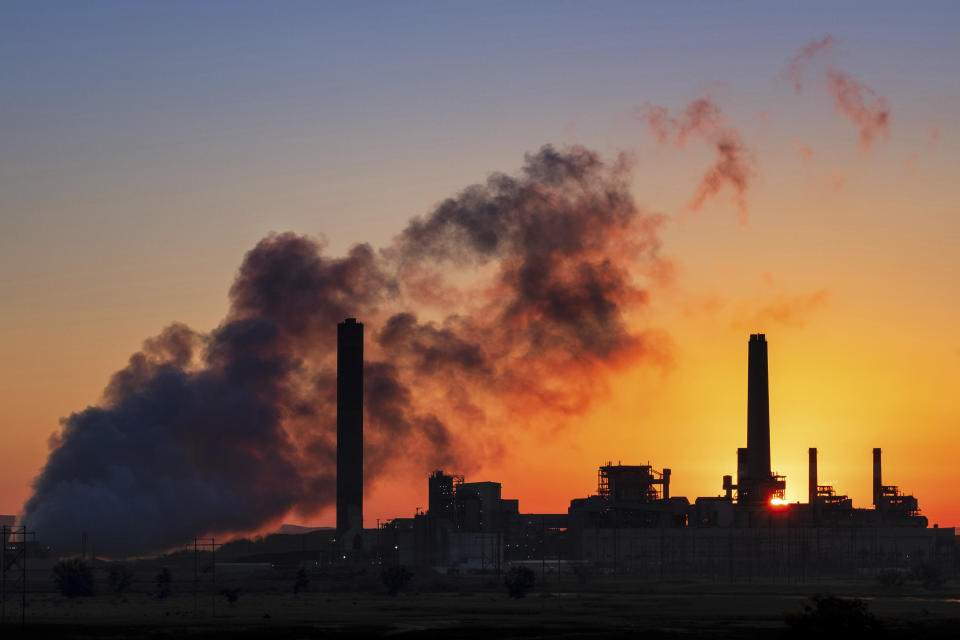Trump's losing, lonely fight to save coal

WASHINGTON — At a campaign rally in Charleston, West Virginia, on May 5, 2016, Donald Trump donned a hardhat. As the audience cheered, he flashed two thumbs up, then mimicked the motion of digging coal, an activity that has sustained West Virginia for more than a century.
His opponent Hillary Clinton had recently predicted that “a lot of coal miners and coal companies” would be laid off or put out of business, in an awkward answer to a question about transitioning to renewable sources of energy. Trump promised the opposite. “Get ready, because you’re going to be working your asses off,” he said.
Trump has labored mightily to restore coal to the prominence it enjoyed in the first half of the 20th century. But neither policymakers nor energy companies are following his lead.
“I have no idea whether coal will make a comeback,” acknowledges Myron Ebell, a proponent of fossil fuels who has advised Trump on energy and environmental matters. Ebell says he expects coal to “bottom out fairly soon,” though also to make a return some years later.
The Trump administration has been intent on keeping that from happening. He has moved to replace the Clean Power Plan put in place by the Obama administration with the Affordable Clean Energy rule, which would significantly loosen emissions standards for existing power plants. In another deregulatory maneuver, the EPA has also dropped demands that new coal plants be built with “carbon capture” technology that reduces emissions to a degree. Trump’s frequent invocations of “beautiful, clean coal” had appeared to suggest that he favored carbon capture technology, which energy companies will now have little incentive to include.

That move came the week that the U.S. Senate successfully confirmed Bernard McNamee to the powerful Federal Energy Regulatory Commission. McNamee is a conservative activist who favors continued use of fossil fuels. And true to form, the American delegation that traveled to Katowice, Poland, for a United Nations summit on climate change defended a continued reliance on fossil fuels.
Yet the industry has not yet benefited from having an energetic booster in the Oval Office. According to a senior analyst with the U.S. Energy Information Administration, trends point to a “continued decline of coal in the power sector,” with 11 plants retired across the country in 2018. Those plants are, for the most part, being replaced with renewable sources of energy. The analyst could only point to one coal plant slated to come online anytime soon: a “very small” 17-megawatt plant on the campus of the University of Alaska at Fairbanks. That project began in 2014, under the Obama administration.
The U.S. Energy Information Administration analyst — who would speak only on the condition of anonymity — said that a coal plant was being built in Wyoming; a coal plant in Georgia has passed the regulatory process, but construction has not yet begun. The energy analyst was not aware of any other coal-related projects across the United States.
“His efforts to revive the coal industry are doomed,” Mary Anne Hitt of Beyond Coal says of President Trump’s efforts. Noting that renewables are both cheaper and cleaner than coal, Hitt calls coal “a big loser in the marketplace and the court of public opinion.” She also notes that it is not the federal government but state and municipal authorities that make energy decisions.
And those decisions are increasingly in favor of closing coal plants. In northern Indiana, Nipsco —whose parent company NiSource operates utilities in seven states — recently announced that it is shutting down its two coal-burning plants in that state, as the company moves towards a portfolio of renewables. And in Colorado, Xcel Energy has vowed to generate all of its electricity from renewable sources by 2050.

The “key differentiator” for Nipsco was the price of renewables, explained company spokesman Nick Meyer. He told Yahoo News that some customers were “surprised” by the company’s decision to drop coal from its portfolio. “Largely, we’ve seen a lot of acceptance and excitement for the future,” Meyer told Yahoo News.
The president does not share that excitement. If anything, he and his allies have tried to dampen it, by arguing that renewable sources are not reliable and simply constitute too small a portion of the energy sector to make much of a difference. About 17 percent of the nation’s electricity comes from renewable sources.
Proponents of renewable sources say that that share will only grow, especially if the federal government were willing to help. The Trump administration is peddling a “false narrative” that “coal is a viable, forward-looking power generation fuel,” charges Nicole Cantello, a shop steward with the American Federation of Government Employees and an EPA lawyer in Chicago. “No one’s building any new coal plants,” she adds. “This administration knows that.”
Even natural gas, recently seen as a kind of savior of the energy sector, has been losing out to renewable sources. Last spring, officials in Arizona said that no new gas plants could be built in the state for at least the next nine months, indicating that they believe the state’s energy future will be based on solar arrays. The regulatory body that made that determination consists of five Republicans.
Michelle Bloodworth, president of the coal lobby America’s Power, insists that reports of the death of coal are exaggerated: “Coal is expected to remain an important source of electricity,” she wrote in an email. “America’s Power looks forward to working with energy leaders at both the federal and state levels in 2019 to ensure fuel-secure resources like coal are making the electric grid more reliable and resilient.”
Ebell agrees that the loosening of regulations could lead to the construction of new coal power plants, especially “once the global warming fad fades.” He says that the coal industry could also benefit from the rollback of the Mercury and Air Toxic Standards Rule, which was implemented by the Obama administration in 2011 to regulate toxic pollution from burning coal, a separate problem from greenhouse-gas emissions. The rule is currently under review by the Trump administration.

_____
Read more from Yahoo News:
Cohen is a ‘serial liar,’ says former Trump aide Lewandowski
Take a number: Migrants, blocked at the border, wait their turn to apply for asylum
An American killing: Why did the U.S. Park Police fatally shoot Bijan Ghaisar?
I called George Bush a ‘wimp’ on the cover of Newsweek. Why I was wrong.
Photos: 4th consecutive Saturday of anti-government protests in Paris


